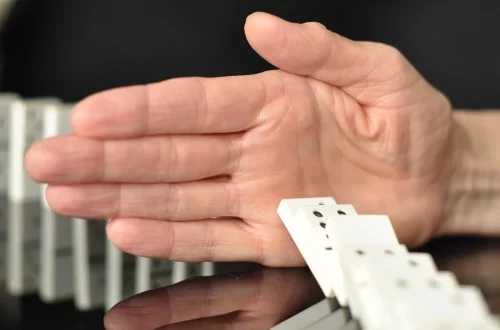
The Fascinating World of Side Eyeing Dogs and Their Expressions
Dogs possess an extraordinary ability to communicate with us, often transcending the limitations of language. Their expressions, body language, and behaviors convey a wealth of emotions and intentions, providing insight into their moods and feelings. One particularly captivating aspect of canine communication is the concept of “side eyeing.” This subtle yet telling expression can reveal a dog’s emotions, thoughts, or reactions to different situations. Side eyeing occurs when a dog glances sideways at something or someone, often while keeping its head still. This nuanced behavior can be both amusing and informative, allowing dog owners to better understand their furry companions.
The fascinating world of canine expressions is vast and complex, with side eyeing serving as just one example of how dogs communicate. Observing these behaviors can enhance our bond with our pets and improve our ability to respond to their needs. Understanding the context in which dogs display side eyeing can help us decipher their feelings and intentions, ultimately leading to a more harmonious relationship. As we delve deeper into this intriguing aspect of canine communication, it becomes evident that side eyeing is not merely a quirky behavior but a significant part of how dogs navigate their social environments.
The Psychology Behind Side Eyeing in Dogs
Understanding the psychology behind side eyeing in dogs requires a closer look at their instincts and social behaviors. Dogs are pack animals, and their survival often depended on their ability to read the emotions and intentions of their companions and potential threats. Side eyeing is an instinctual behavior that allows dogs to assess their environment without drawing too much attention to themselves.
When a dog side-eyes, it is often a sign of wariness or caution. This behavior can emerge in various situations, such as when a dog is introduced to a new person, animal, or even an unfamiliar object. By glancing sideways, the dog can gather information about the situation while maintaining a level of safety and comfort. This subtlety is crucial in the animal kingdom, where threats can arise unexpectedly.
In addition to caution, side eyeing can also indicate curiosity. A dog may side-eye a new toy or a strange sound, showcasing their desire to explore while remaining alert. This dual nature of side eyeing—both cautious and curious—reveals the complexity of canine emotions and highlights the importance of observing these subtle cues.
Moreover, side eyeing can reflect a dog’s relationship with its owner or handler. Dogs are highly attuned to human emotions, and they often mirror our feelings. If an owner is anxious or upset, a dog may respond with side eyeing as a way to gauge the situation. This behavior underscores the deep bond between humans and dogs, emphasizing their role as emotional support animals.
Understanding the psychological factors behind side eyeing can help dog owners become more attuned to their pets’ needs. Recognizing the context in which this behavior occurs can lead to more effective communication and a deeper understanding of a dog’s emotional state.
Different Contexts of Side Eyeing Behavior
Side eyeing in dogs can manifest in various contexts, each carrying its own meaning and significance. By examining these contexts, we can gain a more comprehensive understanding of what our dogs are trying to communicate.
One common scenario for side eyeing is during playtime. When dogs interact with each other or with their human companions, they often display a range of expressions, including side eyeing. If a dog is engaged in play but feels unsure about the other dog’s intentions, it may glance sideways to assess the situation. This behavior can indicate that the dog is having fun but remains cautious, ensuring that playtime does not escalate into aggression or discomfort.
Another context for side eyeing is during the introduction of new elements into a dog’s environment. Whether it’s a new piece of furniture, a visiting guest, or a strange animal outside, dogs may side-eye these unfamiliar stimuli as they gather information about their surroundings. This behavior helps them determine if the new element poses a threat or if it can be safely accepted into their territory.
Side eyeing can also occur during moments of conflict or tension, especially between dogs. When two dogs are in close proximity and one feels threatened or challenged, the side eye can serve as a warning signal. This is particularly true in multi-dog households, where establishing a hierarchy is essential. A dog that side-eyes another may be expressing discomfort or asserting its position without resorting to aggressive behavior.
Additionally, side eyeing can be a reaction to human behavior. If a dog notices its owner scolding another pet or displaying frustration, it might glance sideways to gauge the owner’s emotional state. This behavior reflects a dog’s sensitivity to human emotions and highlights their desire to maintain harmony within the household.
Understanding the various contexts in which side eyeing occurs can help dog owners become more vigilant observers of their pets. By recognizing these situations, owners can foster an environment that encourages open communication and emotional well-being for their furry companions.
How to Interpret and Respond to Side Eyeing
Interpreting side eyeing behavior in dogs requires careful observation and context consideration. While this expression can indicate various emotions, understanding the nuances can help owners respond appropriately and strengthen their bond with their pets.
When a dog engages in side eyeing, it’s essential to consider the surrounding circumstances. For instance, if a dog is side-eyeing another pet during play, it may be a sign of caution or discomfort. In this case, owners should monitor the interaction and intervene if necessary to prevent any potential conflict. Providing a safe and positive play environment can help alleviate any anxiety the dog may be experiencing.
If a dog side-eyes a new object or person, it’s crucial to approach the situation with patience. Rushing a dog to interact with something unfamiliar can exacerbate its anxiety. Instead, owners can encourage exploration by allowing the dog to observe from a distance, gradually introducing the new element at its pace. Positive reinforcement, such as treats or praise, can help create a positive association with the new stimulus.
In situations where a dog side-eyes its owner, it is vital to consider the owner’s emotional state. If a dog senses its owner is stressed or upset, it may respond with side eyeing as a way to gauge the situation. Recognizing this behavior can prompt owners to reflect on their emotions and create a calmer environment for their pets.
Additionally, side eyeing can serve as a prompt for training opportunities. If a dog displays this behavior in response to a command or situation, it may indicate uncertainty. Owners can use this moment to reinforce training through gentle guidance and positive reinforcement, helping the dog build confidence in its actions.
Ultimately, responding to side eyeing behavior requires empathy and understanding. By paying attention to the context and the dog’s emotional state, owners can foster a trusting relationship, ensuring their pets feel secure and understood.
The Importance of Socialization and Training
Socialization and training play crucial roles in shaping a dog’s behavior and emotional responses, including side eyeing. Proper socialization exposes dogs to various environments, people, and other animals, helping them develop confidence and adaptability.
A well-socialized dog is more likely to approach new situations with curiosity rather than caution. Early exposure to different stimuli can reduce fear-based reactions, such as side eyeing. For example, a dog that has been socialized with diverse experiences may be less likely to side-eye new people or objects, as it has learned to approach these situations with a positive mindset.
Training also reinforces a dog’s understanding of commands and expectations, fostering a sense of security. A dog that understands basic commands is less likely to feel anxious in unfamiliar situations. Training sessions can provide mental stimulation and strengthen the bond between the dog and its owner, ensuring that the dog feels secure and confident in its environment.
Moreover, socialization and training can help address any undesirable behaviors associated with side eyeing. If a dog frequently displays side eyeing in response to certain stimuli, it may indicate fear or insecurity. Through consistent training and positive reinforcement, owners can help their dogs overcome these challenges, promoting a more relaxed and confident demeanor.
In conclusion, the fascinating world of side eyeing dogs offers a glimpse into the intricate emotional lives of our canine companions. By understanding the psychology, contexts, and interpretations of this behavior, dog owners can enhance their relationships with their pets. Socialization and training further contribute to a dog’s emotional well-being, ensuring that they navigate their environments with confidence and security.
**Disclaimer:** This article is for informational purposes only and should not be considered medical advice. For any health concerns regarding your pet, please consult a qualified veterinarian.




